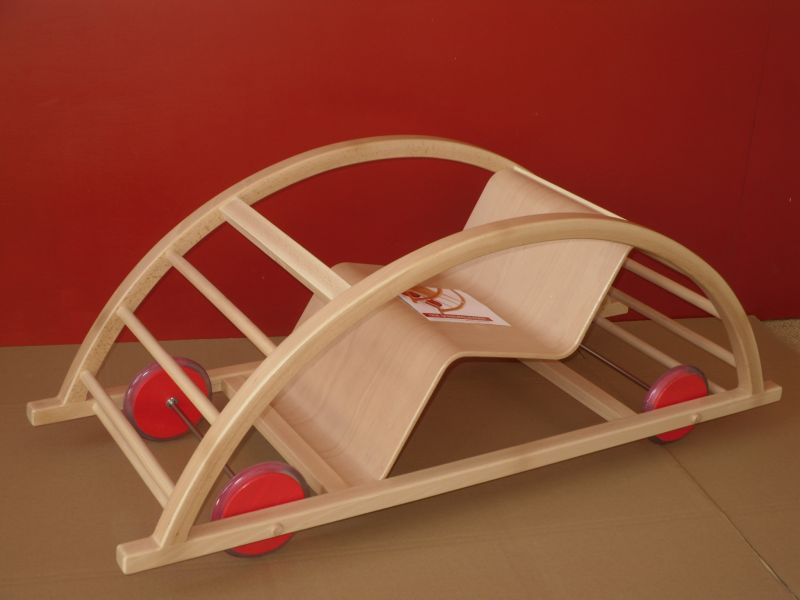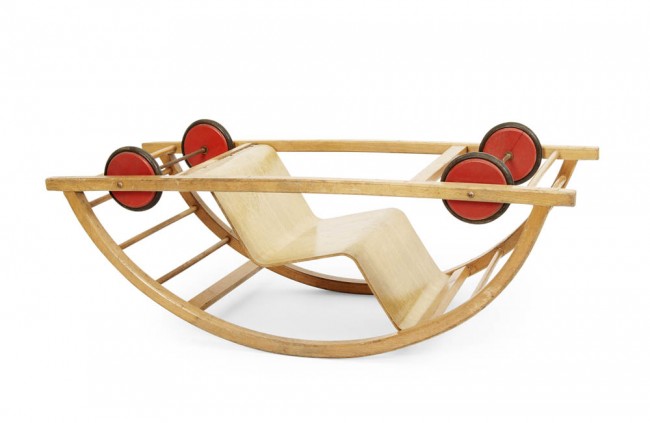(smow) blog Design Calendar: March 4th 1951 – The exhibition “Models for industrial design from the Hochschule für Bildende Künste Dresden” opens in Leipzig
“It is simple to prove that despite all distractions to the contrary from the cultural community in western Germany that also in the area of industrial design no real, definitive, new impetus can be expected; the foundation for such is missing and the wheel of development is being turned back, advancement stopped and that regardless if Germany – and the future in general – is thereby endangered….. We, the artists of the German Democratic Republic, are the opinion that owing to our advantageous economic position we are better placed to identify the questions relevant for German creatives and therefore feel a need to inform and instruct our colleagues and friends in the west. We see ourselves obliged to demand our colleagues in the west discuss these questions with us, as they concern Germany as a whole.”1
So pronounced the accompanying brochure to the exhibition “Modelle für die industrielle Gestaltung von der Hochschule für Bildende Künste, Dresden” – Models for industrial design from the Hochschule für Bildende Künste, Dresden – which opened in the African Room of the Grassi Leipzig Ethnography Museum2 on March 4th 1951.
The provocation was of course carefully planned.
In 1950 the Hochschule für Bildende Künste Dresden had published a promotional brochure featuring works by staff and students from the design department, the 1951 exhibition brochure is exactly the same – save the text on the front page. A text that was, almost certainly, added as a response to the political situation of the day.
The exhibition in Leipzig took place not only in context of the 1951 Leipzig Spring Trade Fair, the Frühjahrsmesse, an event that the East German government traditionally used to underscore their superiority to the West, but also shortly after the publication of the first East German Five Year Plan, a situation that naturally called for a certain bravado on the part of the ruling Sozialistische Einheitspartei Deutschlands (SED).
In addition the exhibition took place in context of the the so-called “Formalism Debate”
A subject for a post in its own right and not something we want to dwell too long on here, the East German Formalism Debate can be briefly summarised as: After initial acceptance of ex-Bauhaus students and their modernist ilk, in July 1950 the East German authorities denounced formalism as “alienated and hostile” towards the German Volk, and a “weapon of imperialism”3 Or to paraphrase: Western, capitalist, decadent. And thus to be rejected. The resolution from the SED Conference of July 24h 1950 notes that “Formal tendencies are especially strong in architecture and they ignore the real needs of the workers”4 The solution for the SED was to strive towards their own forms of art and literature. Forms or art and literature which were more closely associated with said Volk. And so their perceived needs.
The Formalism Debate was effectively ended at the SED Central Committee Conference on March 17th 1951 in Leipzig with the passing of a motion calling for “The battle against formalism in art and literature, for an advanced German culture”.
During the debate to the motion, amongst other similar opinions, the views were expressed that “In terms of architecture, which has an important role to play in our Five Year Plan, we are mainly hindered in our attempts to develop an architecture that express the new social conditions in the German Democratic Republic by the so-called “Bauhaus Style” and the constructivist, functionalist world view of many architects”, and that, “the production of earthenware and china is neither artistic not practical and doesn’t meet the justified demands that our Volk place in such products”5 In addition to general criticisms, Mart Stam, at the time rector of the Kunsthochschule Berlin-Weissensee and previously rector in Dresden, in which capacity he had personally mentored many of the students as they developed the projects on show in the Leipzig exhibition, was also personally attacked. Ernst Hoffmann, at the time 2nd Secretary the Berlin SED, claimed, unequivocally, “The headteacher, our Genosse Stam, is a formalist; as such he cannot be the spokesman for the organisation of a realistic artistic development in this school”6, while Dr Kurt Liebknecht, President of the Deutschen Bauakadamie Berlin added, “Especially poor is the question of training at the college in Weissensee ….. Particularly in this school, in Berlin, which stands at the front of the battle against cosmopolitanism, we must, as quickly as possible, restore ideological order and undertake a decisive campaign”7
All this, lest we forget, taking place the week after Models for industrial design from the Hochschule für Bildende Künste Dresden had been presented.
Facts which indicate that while more than happy to misuse the showcase as a vehicle for DDR propaganda, the authorities had no interest in ensuring the exhibition itself, and so the exhibited designers, had any notable success. They were after all, and despite their youth, remnants of an old ideology. And one shouldn’t be inspired to question too closely why, as such, they were allowed to present their works.
We, for example, can find no single mention of the exhibition in any of the newspapers and magazines of the day, and that despite the extensive coverage of the Frühjahrsmesse in general, while in official archives the event survives only as the odd footnote or annotation.
To all intents and purposes the exhibition has vanished. It is as if the first class of East German industrial design students had never existed.
Which is a shame because the exhibition included a few real gems including, for example, a delicious collection of porcelain by Margarete Jahny, a kids cutlery set by Marianne Brandt and Hans Brockhage’s Schaukelwagen, which, as far as we can ascertain is the only object from the exhibition currently in production.
And so, and at the risk of horribly over-egging our literal pudding, is the only survivor of the East German Formalism Debate and the SED’s purge of Bauhaus in the early 1950s.
1. “Das Beste für den Werktätigen”, as reproduced in Hans Brockhage & Reinhold Lindner, “Marianne Brandt “Hab ich je an Kunst gedacht” Chemnitzer Verlag, Chemnitz 2001
2. Email from Eberhard Patzig, Leiter der Bibliothek und Grafischen Sammlung, GRASSI Museum für Angewandte Kunst Leipzig, 14.02.2014
3. Anne-Kathrin Weise, “Leben und Werk von Marianne Brandt” PhD Thesis, Humboldt Universität zu Berlin, 1996
4. Tun als ob, Die Zeit, 03.08.1950, http://www.zeit.de/1950/31/tun-als-ob Accessed 03.03.2014
5. Hans Lauter, “Der Kampf gegen den Formalismus in Kúnst und Literatur, für eine fortschrittliche deutsche Kultur. 5 Tagung des Zentralkomitees der SED vom 15-17 März 1951”,Dietz Verlag, Berlin, 1951
6. ibid
7. ibid
Tagged with: Dresden, Hans Brockhage, Leipzig, Modelle für die industrielle Gestaltung von der Hochschule für Bildende Künste, Models for industrial design from the Hochschule für Bildende Künste Dresden, Schaukelwagen

